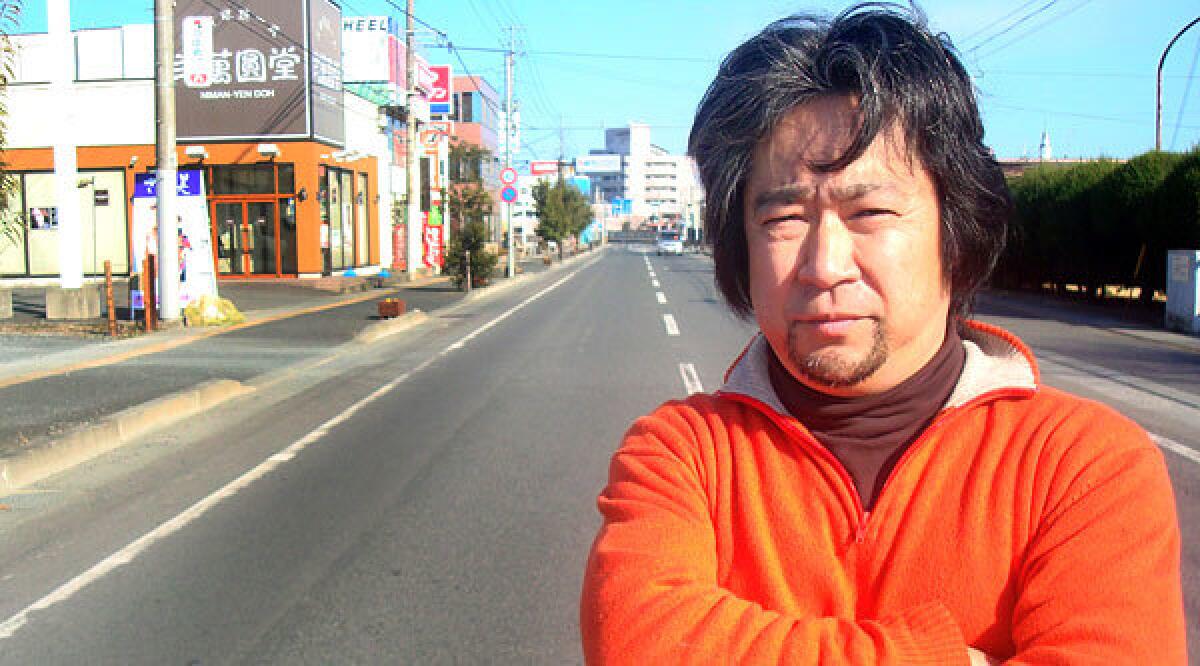Anger and abandonment in a Japanese nuclear ghost town

Hoshi Jyunichu lives in a nuclear ghost town.
On a recent afternoon, he calmly swept the entrance to his downtown coffeehouse, even though only one solitary soul had crossed the threshold the entire day. His customers, his neighbors, even his family, have all fled, leaving the 46-year-old father of two among Minamisoma’s stubborn holdouts.
“I was born here; I don’t want to give up this town,” he insisted. “And so I’m staying until I can bring my family back here.”
Yet no one in Minamisoma, or anywhere else, has the faintest idea when that might possibly happen.
Before the March 11 earthquake and tsunami that led to the nearby Fukushima Daiichi nuclear power plant springing radioactive leaks, this coastal town was popular for its annual samurai festival, a scenic destination where the mountains tumble down to meet the sea.
But with the ominous prospect of potentially deadly fallout from the stricken complex just 15 miles to the south, nearly two-thirds of this agricultural city’s 71,000 residents have fled, with more following all the time.
Those who remain endure life in a no-man’s land, facing growing fear and deprivation. Days after the first toxic leaks, the Japanese government ordered residents within 12 miles of the plant to leave their homes. Last week, it recommended that residents beyond 12 miles and within 18 miles also evacuate, an area that includes portions of Minamisoma.
The rest of the town remains in an area where residents have been advised to remain indoors at all times. With additional heightened radioactivity findings this week, the Japanese government is under pressure to extend the evacuation zone farther.
The safety guidelines have left residents on their own to decide whether to depart or stay behind and face the invisible hand of danger.
About 50,000 people had already departed before the 18-mile evacuation zone was established last week. More abandon their homes with each passing day, looking like the Dust-Bowlers of Steinbeck’s novel, their cars and trucks loaded with possessions.
Behind them sit boarded-up businesses and entire housing tracts without a human being in sight. Nowadays, no children ride bicycles here. Most of the people who remain are afraid to venture outside, even briefly. When they do, they cover their faces with masks to protect themselves from the perilous unseen particles.
If anyone smiles in Minamisoma, no one else will see.
Residents fear that Fukushima will become another Chernobyl, the Ukrainian nuclear plant whose breached core in 1986 caused the worst accident in the history of civilian nuclear power, leaving behind a legacy of thyroid and organ cancers.
There are financial worries as well. Many farmers believe their fields of spinach and winter cabbage could be plagued by radioactivity for years to come, threatening family livelihoods that go back generations.
These days, those who stay behind are angry as well as isolated. Residents long ago lost confidence in the Tokyo Electric Power Co., which owns and operates the Fukushima plant. They suspect the utility has downplayed the radiation crisis. But now, a growing number also feel abandoned by the government in Tokyo, which they say has failed to respond to their calls for aid, advice and information.
“The only news I get is from TV,” said Minamisoma Mayor Katsunobu Sakurai. “There’s no communication with government officials. Any advice about what we should do has been far short of what we need. And that makes me angry.”
Each night, Sakurai, 55, sleeps on a couch in his tiny office. A balding bachelor with oversized glasses, he has moved his elderly parents out of town. Now he has no need to return to his home at night.
Sakurai says he is still awaiting word on radioactivity levels in his town. Most days, he eats a cup of instant noodles made with bottled water, and maybe a little rice and bread.
“There’s not enough aid,” he said. “People think it’s polluted here. The drivers and the volunteers, they’re all afraid to come. Even the reporters call me on the telephone.”
The town’s lone busy place is the city hall lobby, two floors below Sakurai’s office, where residents have come to arrange for transportation out of town. Concerned that the outdoor air could prove lethal, they scurry from cars into the building like desert denizens on a 120-degree day.
Though many of the town’s elderly have been hustled out of town by younger relatives, those who remain say they’re too old to worry about radiation: by the time the cancer got them, they’d already be dead from something else.
“Sometimes I just feel so lonely,” said city worker Michiko Susuki, who spends her days counseling residents. “I ask myself, where have all the people gone? They’ve been driven away by fear. It’s like looking up at the sky at night being used to seeing the moon and stars and seeing nothing but blackness. It scares me.”
In Minamisoma, farm fields still have a few goats and an occasional crow that circles overhead. But farmers are not in evidence.
Still, there are those downtown who say they are going nowhere.
Late on a recent afternoon, the sun broke through on an otherwise gray day, and Jyunichu, the coffeehouse owner, suggested it indicated, despite all evidence to the contrary, that Japan’s late-winter nuclear nightmare might finally be coming to an end.
A smallish man with salt-and-pepper hair, he insisted he isn’t crazy or even stubborn, just a passionate devotee of the place he has spent his entire life. And he wasn’t, he promised, leaving anytime soon. “You live where you live,” he said. “Home isn’t a place you run away from.”
Mayor Sakurai put it another way: “If the radiation really proves to be dangerous, after everyone else has gone, I guess I’ll have to go,” he said.
“But we’re trying to keep our town alive here.”
Special correspondent Kenji Hall in Tokyo contributed to this report.
More to Read
Sign up for Essential California
The most important California stories and recommendations in your inbox every morning.
You may occasionally receive promotional content from the Los Angeles Times.










